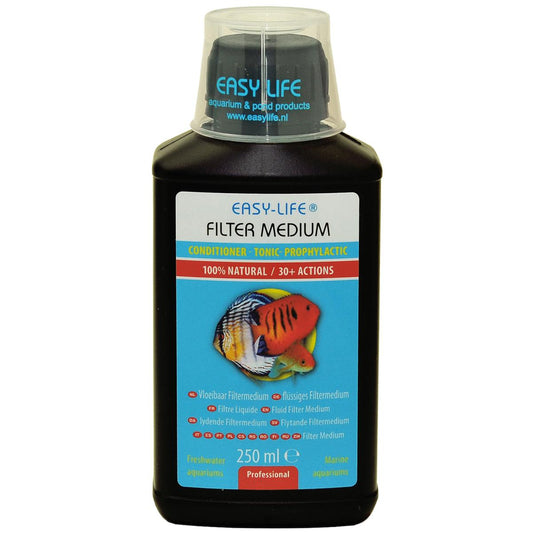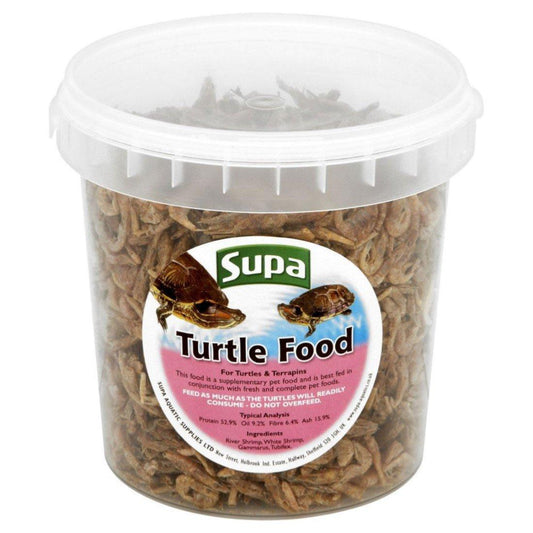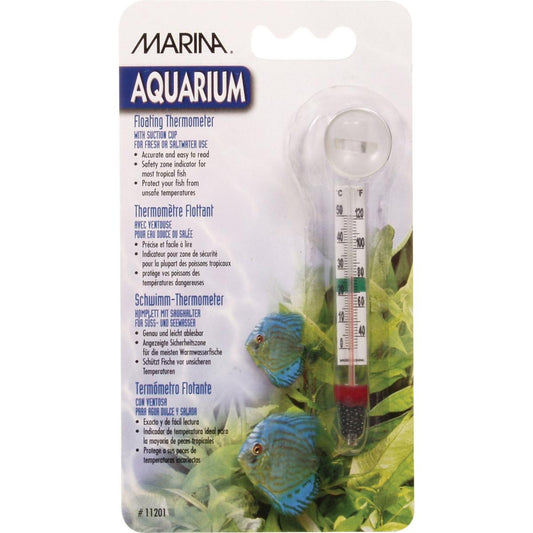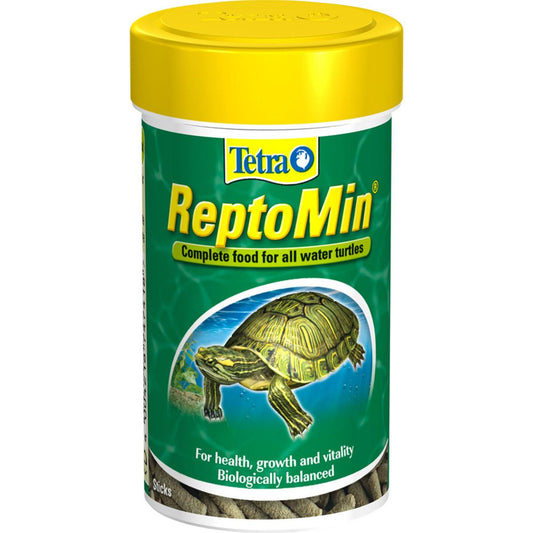
Also known as the Eastern Musk Turtle, or the Stinkpot, the Common Musk Turtle is a popular choice as an aquatic pet terrapin, due to their relatively small size and ease of care. They may be small, but they can be feisty, and with a lifespan of up to 50 years they are not a commitment to be undertaken in a hurry!

Sternotherus odoratus - Scientific Classification

The Musk Turtle is a small turtle with a highly domed shell

Sternotherus odoratus - Distribution Map

Common Musk Turtles are found in a variety of wetland habitats and shoreline habitats, favouring shallow watercourses with muddy, organic bottoms, abundant aquatic vegetation and slow currents as part of the same classification family as mud turtles.
The Stinkpot can be found living in southern Ontario, southern Quebec, and in the Eastern United States from southern Maine in the north, south through to Florida, and west to central Texas, with a disjunct population located in central Wisconsin.
Although the common musk turtle holds no federal conservation status in the US and is quite common throughout most of its range, it has declined notably in some areas, and appears to be more sensitive than some native species to human degradation of wetlands. It is listed as a threatened species in the state of Iowa and as a species at risk in Canada, and is protected by the federal Species at Risk Act (SARA), while it is also protected under Ontario's endangered species act. In this part of its range, only wetlands with minimal human impact have robust populations. Road mortality of breeding females may be one of the problems associated with human development. Water pollution, raccoon predations, and incidental mortality from fishing lines and traps are all threats to this species. Although they tend to move less than 1km in short bursts, high rates of road mortality is another threat to the species.
The stinkpot is a small turtle with a highly domed dark brown or black shell, that may be streaked or mottled and commonly accumulates green algae. There are two distinct stripes on the head and barbels on both the chin and throat. The head is vaguely triangular in shape, with a pointed snout and sharp beak, and yellow-green striping from the tip of the nose to the neck.
It grows to a straight carapace length of approximately 5.1–14 cm (2.0–5.5 in) and averages in weight at 603 g (1.329 lb). Hatchlings are usually less than one inch long and have a very ridged shell which will become less pronounced as they age and will eventually be completely smooth and domed.
This species can be differentiated from the similar mud turtles (Kinosternon sp.) by their relatively small plastron (bottom of shell), which has one weak transverse, anterior hinge and exposed areas of skin between plastron scutes. The relatively small plastron offers little protection for the rather short legs. Papillae on the tiny tongue of the Common Musk Turtle allow for underwater respiration, where this aquatic creature is able to absorb oxygen to breathe under the water.
Males can usually be distinguished from females by their significantly longer tails, the spike that protrudes at the end of the tail and by observation of the anal vent on the underside of the tail which extends out beyond the plastron on males. Females are also typically larger than males.
A typical lifespan for this species is between 30 and 50 years.
An almost entirely aquatic species yet a fairly poor swimmer, the Common Musk Turtle spending the vast majority of its time in shallow, heavily vegetated waters of slow moving creeks, or in ponds. It typically only ventures onto land when the female lays eggs, or in some cases, to bask. It can climb sloping, partially submerged tree trunks or branches to as high as 2 m (6.6 ft) above the water surface, and can occasionally be spotted resting fairly high in trees.
This species over-winters in the debris and mud under water. The name Stinkpot is appropriately assigned due to the phenolalkalinic acid which can be excreted from glands to create a pungent musky odor, used to deter predators.
Females often lay two clutches each season, containing 1-9 elliptical, hard-shelled eggs, in shallow burrows under debris in the soil of their natural habitat. Clutch size varies with carapace length and age, but environmental factors are thought to be the primary influence due to variations noted between geographical locations. Females are able to produce eggs from around 4 years of age, whereas males reach sexual maturity at just 2 years.
As omnivores, this species is not known to be fussy with their food and in the wild will enjoy a variety of foods including a variety of aquatic invertebrates, seeds, snails, tadpoles and algae. Younger turtles have a much more carnivorous diet than their adult counterparts, and as the turtles age they develop a taste for aquatic vegetation.

Musk Turtles tend to be solitary creatures, and do not enjoy the company of other turtles. In fact, they have gained a notoriety for their brutal behaviour when tankmates take a disliking to one another, especially when both inhabitants are of the same species. Even opposite sex pairs intended for breeding may exhibit poor behaviours to one another, and may need to be kept separately for the majority of their lives. Males of this species tend to be particularly intolerant of tankmates.
Although some grouping behaviours are exhibited in the wild, this is likely due to resource location. As reptiles, they have fairly low feeding requirements and no migratory tendencies compared to some other vertebrates, so forming relationships and friendships with others of their species would not be beneficial in a wild situation. This is transferred to the captive environment and it is likely that what we, as humans, see as companionship, will serve only as a constant stressor to turtles kept with others in regard to food scarcity.
For those who do try to maintain a community environment with multiple Common Musk Turtles sharing one aquarium, constant vigilance and preparation to be able to separate the inhabitants at a moment's notice is imperative for their safety, should aggressive behaviour be exhibited.
As a primarily nocturnal species and a bottom dweller, the Common Musk Turtle will not make as much use of a basking area as some other species. However, a suitable area for basking must still be provided at all times, either in the form of a Turtle Dock or as a piece of cork bark wedged sharply at one edge of the tank to avoid movement and potential injury to the inhabitant. A steeper incline will give the turtle a great chance to show off their incredible climbing skills but ensure that it is accessible to your turtle as their size increases.
The most fascinating behaviour exhibited by this small turtle species is that which gives them their nickname - the Stinkpot. When disturbed, these turtles can quickly release a foul-smelling liquid from its musk glands, in the form of phenolalkalinic acid that creates a pungent musky odour.
The Common Musk Turtle will also often be observed walking along the bottom of their enclosure, foraging for food, rather than swimming along as is more often seen in other species.
All aquatic turtles should be handled with care and respect, and serve better as an observational pet rather than one to be handled regularly, although it is important that you are able to handle your Common Musk Turtle in case of injury or illness. To ensure you are not at the end of a nasty nip, you should be especially careful if you have to handle the Stinkpot. Picking them up towards the rear of their shell can help, although their necks are designed to be long and bendy in order to be able to grab a quickly moving target, so don't be shocked if your turtle catches you on occasion with their sharp beak!
Aquatic turtles are well known for carrying Salmonella bacteria in their gut, which can be transferred to humans via handling and contact with the turtle's environment. Turtles with Salmonella living in their intestines rarely show symptoms, and sometimes even when tested for the bacteria, infected turtles will not test positive because the bacteria is released at such low rates. There is evidence that suggests turtles release more Salmonella in their faeces when they are stressed and this, combined with the relatively small volumes of water in their enclosures, explains why captive turtles exhibit higher rates of Salmonella in comparison to their wild counterparts.
It is important to keep in mind that proper precautions can prevent a pet turtle from spreading harmful bacteria to humans that handle them. Washing your hands after touching a turtle, or anything that has come in contact with its enclosure will keep you safe while interacting with your pet. If you have children, you will need to supervise interactions to ensure they are not tempted to put their hands in their mouth before washing.

The creation of a reasonably shallow watercourse by way of an aquarium, tartarium or terrarium with a powerful water filter at one end, is the key to a comfortable environment for this species of terrapin.
Enclosure size will depend on the age and size of your pet, and of course whether you choose to have more than one turtle. A 60cm long Tartarium tends to be sufficient for one Common Musk Turtle, although a particularly large specimen may require a size upgrade to provide comfortable swimming space as an adult. For those who wish to attempt to keep multiple Common Musk Turtles in one enclosure, a minimum tank size of 120 litres is required.
As a ground walking species rather than a particularly strong swimmer, a water depth of around 10cm is ideal for young turtles, extending to a depth of 15cm as the turtle nears its adult size.
A dry basking area should be provided in the form of a Turtle Dock onto which the Common Musk Turtle will clumsily scramble to bask beneath their heating provision.
Strong and reliable filtration is the key to successfully keeping such a pet without odour or harm to the turtle from excessive toxins building up in their environment. Choose a filter which is designed to filter at least 4 times the amount of water in your tartarium per hour, and that can safely be used horizontally to allow for the lower water level required in a turtle tank, such as the Fluval U-Series Internal Filter.
Being a species which spends so much of their lives underwater, provision of correct water temperature is extremely important for the health and wellbeing of a Common Musk Turtle. The water temperature should be maintained between 22°C and 26°C, with younger animals tending to prefer temperatures towards the higher end of this range. A submersible heater with a temperature scale and internal thermostat is ideal to maintain this temperature throughout the water in the tartarium, with the Betta Submersible Heater providing a great product at excellent value for this purpose.
Ambient temperature at the basking spot should be approximately 29°C, provided by a ReptiTuff Splashproof Halogen Bulb, rather than a regular heat lamp which could shatter due to the high humidity or water splashes in an aquatic environment.
High quality provision of UVB is vitally important to ensure that Common Musk Turtles are able to metabolise Calcium and to prevent Vitamin A and D3 deficiencies. A 12 hour on-off cycle for bulbs will help to mimic natural conditions.
Thermometers both in and out of the water will ensure that the temperature of the turtle enclosure can be constantly monitored and help owners to become quickly aware of any issues in case of equipment malfunction.
Although not essential, many owners choose to use a substrate such as smooth pebbles to offer their Common Musk Turtle a more natural environment to walk on. This species can be quite a messy and quick eater, so pebbles should always be larger than could be swallowed by the turtle, with 7mm Dorset Pea Gravel tending to be a good choice.
Place bogwood, rocks, ceramic plant pots and other objects in the tank for your Common Musk Turtle to investigate and hide beneath. Be sure to leave at least one corner of the tartarium free from any obstructions, as these turtles like to raise their heads above the water level in a corner of their enclosure on occasion. They prefer plenty of vegetation, artificial or live plants can be used, but care should be taken to avoid using artificial plants if your turtle begins to chew on them.
The water should be deep enough that your pet’s hind legs can touch the bottom while being able to stretch a bit and breathe at the surface without the need to paddle constantly.
Keeping this species with fish is not recommended. As nocturnal hunters, Common Musk Turtles come to life at night when fish tend to sink to the bottom of the tank to rest, meaning that the fish are likely to become an addition to your turtle's diet.
In the wild, a Common Musk Turtle's diet will consist mostly of a variety of small snails, mollusks, crayfish and aquatic insects such as dragonfly and damselfly nymphs, alongside actively pursuing small tadpoles and terrestrial insects that fall into the water. They will occasionally consume plant matter such as Elodea species or duckweed.
Pets are best fed on a fish based, complete diet such as Tetra Water Turtle Food in combination with a variety of complementary components such as bloodworms, morio and mealworms, small pieces of fish and beef heart, and dried shrimp such as that found in the handy Supa Turtle & Terrapin Food which contains a selection of river shrimp, shrimp flakes, gammarus and tubifex.
Younger turtles should be fed little and often - at least daily. Adults should be fed every other day once they are fully grown.

Musk Turtles have a high bio-load (they create a lot of waste!), so regular aquarium maintenance is necessary alongside a good filtration system.
Excess food should be removed from the enclosure as soon as possible, with a net being used to catch any food which has not been eaten within 15 minutes, to prevent the food from decomposing in the water.
The water should be clean and clear at all times, which can usually be achieved by performing water changes of 20% weekly. A gravel cleaner should be used during these water changes to remove debris trapped within the substrate, in order to reduce the build-up of excess anaerobic bacteria, which can be harmful if allowed to bloom as it can reduce available oxygen within the water system to dangerous levels, as well as the risk of opportunistic bacteria causing infections.
Before replacing the water in the tartarium, it should always be brought to a suitable temperature (don't add very hot or cold water to the turtle enclosure) and a Turtle-Safe Tap Water Conditioner used to remove chlorine and neutralise chloramine and heavy metals.
Proper precautions can prevent a pet turtle from spreading harmful bacteria, such as the commonly carried Salmonella, to the humans that handle them. Washing your hands after touching a turtle, or anything that has come in contact with its enclosure will keep you safe while interacting with your pet. If you have children, you will need to supervise interactions to ensure they are not tempted to put their hands in their mouth before washing.

For an owner who enjoys a pet more suitable for observation rather than regular handling, a Common Musk Turtle may be ideal! They are fun, interesting and inquistive creatures, who will certainly get to know your routine and will be very keen to interact come feeding time. Staying reasonably small, they are a hardy little species and certainly a good choice for a less experienced turtle keeper.
They are inexpensive to keep and maintain, but you can expect the initial cost of acquiring a suitable enclosure and equipment for your new pet to be quite high. The most expensive component of their ongoing care is regular replacement of the UV bulb, and of course the fact that, should they become ill, you will need to visit a specialist reptile vet. As with any animal, a potential owner should not take on a Common Musk Turtle unless they are confident they will be able to provide for their new pet (financially and physically) for at least their natural lifespan.


The length of a terrapin is usually defined as the length of its carapace, or shell. Common Musk Turtles usually grow to between 4 and 5 inches in length, with an average body weight of around 600 grams.
In captivity, this species will usually live for between 30 and 50 years.
As a fast moving, quick nipping species, the Common Musk Turtle should be handled with care. When frightened, they can release a nasty smelling odour, designed as a defence mechanism against predators. Aquatic turtles carry Salmonella bacteria in the gut, so care should be taken to wash hands well after handling these pets.
Baby turtles in particular are certainly capable of catching their owners by surprise with a sharp nip, which can be quite painful. However, well handled turtles will rarely bite their owners.
Yes, all three of these items are essential in the care of this species. The water temperature should be maintained between 22°C and 26°C by a submersible heater, the ambient temperature at the basking area should be around 29°C and UVB light on a 12 hour on-off cycle is necessary for metabolic processes.
An ideal feeding schedule will have younger turtles being fed little and often - at least daily, whereas adults should only be fed every other day once they are fully grown.
In the wild, this species enjoys a variety of small snails, mollusks, crayfish and aquatic insects. Pet Musk Turtles are best fed a complete diet designed for terrapins, supplemented with bloodworms, morio and mealworms, small pieces of fish and beef heart, and dried shrimp.


















